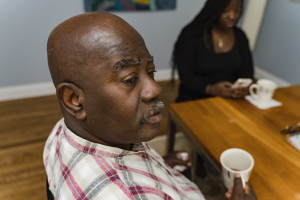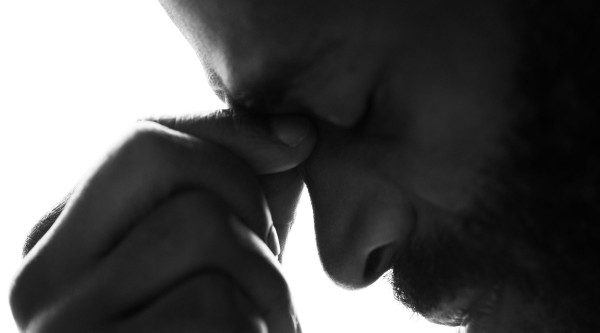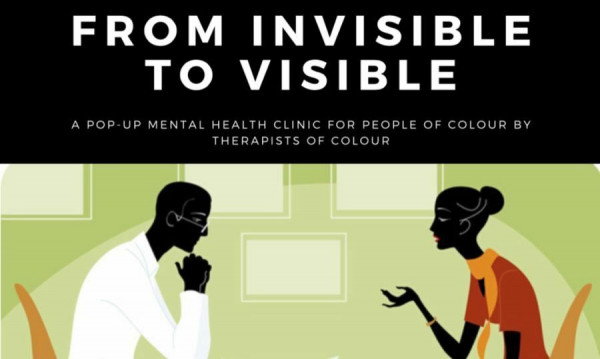As of 2022, over 5 million Canadians ages 15 and older met the diagnostic criteria for a mood disorder, including an anxiety disorder. The COVID-19 pandemic was a critical period where, from 2020-2021, there were large increases in anxiety symptoms for Canadians, particularly among women and young people. One 2022 study suggested that a lower proportion of Black people were living with an anxiety disorder in comparison to other racialized and non-racialized groups except for Filipino, Chinese and South Asian groups.
Conversely, Kogan and colleagues’ 2022 study on anxiety symptoms amongst Black people found that close to 30% of participants in their sample reported clinically significant anxiety symptoms, with young people and men reporting higher rates of anxiety symptoms. Findings also suggest a relationship between anxiety and exposure to racism i.e., racial microaggressions and discrimination.
In my private psychotherapy practice and previous work as a social worker in the Substance Abuse Program for African Canadian and Caribbean Youth (SAPACCY) in CAMH, I have observed a growing number of Black people of all ages presenting with a range of anxiety disorders, especially social anxiety, generalized anxiety and panic disorders. Yet, assessing and discerning for which mental disorder these patients are exhibiting symptoms, can be challenging for any patient, but especially Black individuals due to societal and cultural factors affecting our ability, and desire to disclose our psychoemotional distress.
What is Anxiety?
Anxiety and fear are natural human emotions. We require them to survive; they are emotions regulated by our limbic system, a system of interrelated brain structures located under our cerebral cortex and above the brain stem. Whereas fear is the emotional reaction to a real and imminent threat like a car almost hitting you, anxiety is the emotional reaction to an anticipated threat like thinking you will be hit by a car driving on the highway. Remember the fight-flight-freeze response? These two emotions [fear and anxiety] activate this response.
When fear and anxiety are most intense, we experience panic [fear] or anxiety attacks. Though these terms are often interchanged, they do differ. Anxiety attacks refer to intense anxious symptoms stemming from identifiable anticipated threats e.g., anxiety taking public transit. Conversely, panic attacks are typically spontaneous, often with no direct connection with a specific stimulus, and are associated with more severe psychological symptoms like depersonalization [detachment from self] or physical symptoms such as chest pain, choking sensations or hot flashes.
Anxiety disorders, which include phobias [i.e., the intense and uncontrollable fear of something] are disorders characterized by an excessive and uncontrollable worry or fear co-occurring with a cluster of other symptoms. There are 11 anxiety disorders listed in the Diagnostic and Statistical Manual of Mental Disorders- 5th edition (DSM-5). Social anxiety disorder, also known as social phobia, and generalized anxiety disorder are the most common. Each disorder has separate symptomology and duration criteria, yet some of the overlapping symptoms for various anxiety disorders include:
- Excessive worry or fear about a range of activities, people, or events [dependent on the specific anxiety disorder]
- Somatic [related to the body] symptoms including muscle tension and/or pain, heart palpitations
- Sleep disturbances
- Difficulty concentrating
The required duration of symptoms for anxiety disorders ranges from 1 month [e.g., selective mutism] to 6 months [e.g., generalized anxiety disorder].
There are some health implications associated with anxiety disorders. Research suggests that they have a positive relationship with chronic diseases like chronic kidney disease and hypertension, presumably due to the damage they cause to the endocrine system over time resulting from continuously elevated anxiety levels. Anxiety disorders are also known to sometimes co-occur with substance use disorders, a logical finding since drugs typically serve as an alleviating/self-medicating strategy to cope with psychoemotional suffering.
What causes Anxiety Disorders?
Since the anxiety function lives in all of us, we are all “at risk” of developing an anxiety disorder. However, certain genetic, psychological, and emotional factors can make some of us more susceptible.
Genetically, like other psychiatric disorders, if anxiety disorders run in the family, this predisposition increases someone’s risk of developing an anxiety disorder. Moreover, the largest genome-wide association study (GWAS) on anxiety traits associated with anxiety disorders and other mental illnesses like depressive disorders, discovered a variety of genetic variants on specific genes which increase the risk of developing anxiety disorders for these affected individuals. Some of these genes are associated with the hypothalamic-pituitary-adrenal (HPA) axis, a neuroendocrine mechanism responsible for many functions, especially regulating our stress response.
Psychoemotionally, individuals with anxiety disorders struggle with distress intolerance, an emotional concept referring to the inability to manage unpleasant emotions healthily. Distress intolerance is implicated in, but also increases the risk of, developing an anxiety disorder. For individuals who struggle with distress intolerance, emotional distress can feel so overwhelming, thus influencing them to perceive the situation as unbearable and insurmountable. Distress intolerance problems are exacerbated and/or sometimes “caused” by other stress-inducing psychosocial factors like exposure to adverse childhood experiences [ACE], neighbourhood violence, racial discrimination and microaggressions or frequent, unexplained moving of homes.
Anxiety disorders and Black people
Anxiety disorders afflict many Black people across the African Diaspora. However, Black people often run into problems receiving adequate mental health care and counselling/psychotherapy in Canada for several reasons. Anxiety and panic attacks are intense; our people presenting to different mental healthcare settings with anxiety or panic-related concerns may be, justifiably, dysregulated, and/or inconsolable. Yet, growing empirical evidence tells us that racial bias and negrophobia increase the risk of our clinical presentation being perceived as “aggressive”, thus leading to the likelihood of receiving poor treatment in counselling clinics or clinicians in healthcare settings quickly, and potentially unjustifiably, resorting to the use of mechanical or chemical restraints.
Language, including cultural idioms of distress, are important; mental health clinicians may overlook or misconstrue Black patients’ symptoms due to our people sometimes using different terms to describe anxious moods. Many of my Black male and female patients may be averse to the term “anxious” but may use idioms of distress like “my spirit isn’t right”, “head nuh good,” “I’m just in my head a lot”, or “I’m chilling/I’m blessed” the latter phrase sometimes connoting “I’m distressed/anxious but don’t want to be a burden to anyone and will act like everything is okay”.
Alexithymia, a concept describing the inability to describe or identify one’s emotions is an important concept to understand in relation to anxiety disorders. Alexithymia is linked to emotional repression, a maladaptive coping behaviour involving the unconscious avoidance or suppression of emotions, which is also linked to panic disorder i.e., frequent panic attacks and other physical health problems like digestive problems and chronic pain. Though this concept may also affect Black women, it holds particular significance for many Black men across the Diaspora who, for historical and contemporary reasons, are not typically socialized to identify and express emotions much less mental states, other than anger.
Treatment for anxiety disorders
The goal of treatment for anxiety disorders is to help patients regulate their anxious responses and regain homeostasis. Part of this treatment may involve reducing the intensity of anxiety symptoms through psychotropic medications, usually with the involvement of an antidepressant and maybe the addition of an antipsychotic or mood stabilizer medication for increased efficacy. However, some psychiatrists and scientists are also beginning to promote alternative medicine like Chamomile, to treat anxiety-related symptoms.
Another common treatment method is traditional psychotherapy i.e., talk therapy, where patients explore different situational, psychological and environmental triggers for their psychoemotional and physiological reactions associated with their anxiety disorder, develop alternative thinking patterns and perceptions of situations, understand biological or psychological factors underlying their disorder(s), and to gain health coping mechanisms such as breathing and progressive muscle relaxation techniques.
For those with alexithymia, a large portion of psychotherapeutic work may involve helping them identify and grow comfortable confronting distressing emotions. Alternative psychotherapy as I call it, may also be effective by combining talk therapy with other treatment methods like prayer, nature walks and community gatherings (big up Gyallivant), or reciting and meditating on scriptures from religious texts.
Anxiety disorders are overwhelming conditions which may feel paralyzing, but there is hope. Knowing the signs and symptoms, the factors implicated in these disorders and the first lines of treatment are important steps toward recovery. No need to wait until you experience these anxiety symptoms at a severe level before learning healthy coping mechanisms. Let us continue finding ways to confront, rather than avoid, our unpleasant emotions, and to regulate our fear and anxiety functions rather than them controlling us.

 By
By 







